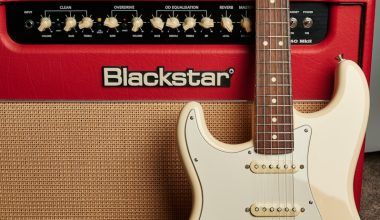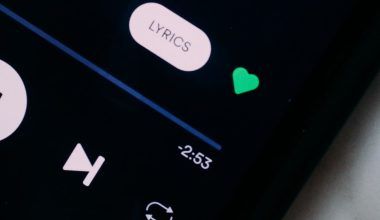Music has a unique power to connect people emotionally. For businesses, tapping into this emotional connection can transform marketing strategies. Enter Spotify for Brands, a platform that enables companies to advertise and engage with audiences through music and podcasts.
In this blog, we’ll explore how Spotify for Brands is reshaping advertising, its key features, and why it’s an essential tool for marketers looking to create impactful campaigns.
Why Spotify for Brands?
With over 500 million active users worldwide, Spotify is one of the most popular streaming platforms. Its vast library of music and podcasts makes it a daily habit for millions. This consistent engagement offers a golden opportunity for brands.
Key Benefits of Spotify for Brands
- Personalized Advertising: Reach users based on their music preferences and habits.
- Global Reach: Advertise to diverse audiences across different regions.
- High Engagement: Audio ads integrated into playlists ensure focused attention.
Spotify for Brands allows businesses to connect with users in moments of relaxation, motivation, or inspiration—when they are most receptive.
Features of Spotify for Brands
Spotify’s advertising platform offers a range of tools that make it stand out from traditional marketing channels. Here’s what makes Spotify for Brands a game-changer:
1. Audio Ads
Spotify’s audio ads are non-skippable and play between songs. These 30-second ads are designed to capture the listener’s attention without disrupting their experience.
2. Video Ads
Video ads on Spotify are visually appealing and engage users during active screen time. These ads are highly effective on mobile and desktop platforms.
3. Sponsored Playlists
Brands can sponsor popular playlists, aligning themselves with specific moods or activities. For example, a fitness brand can sponsor a workout playlist.
4. Podcast Ads
Podcasts on Spotify have seen a massive rise in popularity. Brands can advertise within podcasts, tapping into loyal and engaged listeners.
5. Programmatic Ads
Spotify uses programmatic advertising to deliver targeted campaigns. This ensures that ads are shown to users based on their behavior, preferences, and location.
The Role of Personalization
One of Spotify for Brands’ standout features is its ability to personalize ads. Using listener data, Spotify tailors advertising to match users’ interests.
Examples of Personalization
- Location-Based Ads: Ads that are relevant to the user’s city or region.
- Mood-Based Ads: Ads designed for specific playlists, such as relaxation or workout sessions.
- Genre-Specific Ads: Campaigns targeting fans of a particular genre.
This personalized approach ensures higher engagement and a positive brand experience.
Case Studies: Success Stories with Spotify for Brands
Nike’s Fitness Campaign
Nike leveraged Spotify for Brands by sponsoring workout playlists. Their audio ads encouraged listeners to stay active, aligning perfectly with the playlist’s theme.
McDonald’s Late-Night Ads
McDonald’s used Spotify to advertise its late-night menu. By targeting users streaming music after 10 PM, the brand saw a significant increase in late-night orders.
Airbnb’s Mood Campaign
Airbnb created a series of ads that matched specific moods, such as relaxation or adventure. By integrating with Spotify’s curated playlists, Airbnb increased brand awareness among travelers.
The Power of Music in Marketing
Music evokes emotions, memories, and moods. Brands that align their messages with the right music can create a lasting impact. Spotify for Brands provides a platform to do this seamlessly.
How Music Enhances Brand Recall
- Emotional Connection: Ads with music resonate more deeply with listeners.
- Brand Association: Aligning with popular playlists or genres builds positive associations.
- Increased Engagement: Audio ads integrated into music sessions keep listeners engaged.
Challenges of Using Spotify for Brands
While Spotify for Brands offers numerous benefits, it’s important to understand the challenges:
- Ad Fatigue: Overloading users with ads can lead to disengagement.
- Competition: Popular playlists often have multiple sponsors vying for attention.
- Cost: Premium ad placements, such as sponsorships, can be expensive for small businesses.
Despite these challenges, Spotify for Brands remains a powerful tool for reaching audiences effectively.
Spotify for Small and Medium Businesses
Spotify for Brands isn’t just for global corporations. Small and medium businesses can also leverage the platform’s tools to create impactful campaigns.
Affordable Options for SMEs
- Self-Serve Ad Studio: Spotify Ad Studio allows businesses to create and manage their campaigns with ease.
- Targeted Advertising: SMEs can focus on specific demographics, ensuring their budget is used effectively.
- Localized Ads: Ads can be tailored to target local communities.
Future Trends in Spotify Advertising
As Spotify continues to grow, the opportunities for brands will also evolve. Here are some future trends to watch:
- Voice-Activated Ads: Interactive ads that allow users to respond using voice commands.
- AR/VR Integration: Virtual reality experiences tied to Spotify playlists.
- Enhanced Podcast Advertising: Dynamic ads that change based on listener preferences.
These innovations will further solidify Spotify’s position as a leader in brand advertising.
Conclusion
Spotify for Brands is a revolutionary platform that combines music, personalization, and technology to create impactful advertising campaigns. By aligning with listeners’ moods, preferences, and activities, brands can form meaningful connections.
Related Articles:
For further reading, explore these related articles:
- Discovering Spotify Top Songs: A Musical Journey
- What Does E Mean in Spotify? A Comprehensive Explanation
For additional resources on music marketing and distribution, visit Deliver My Tune.





